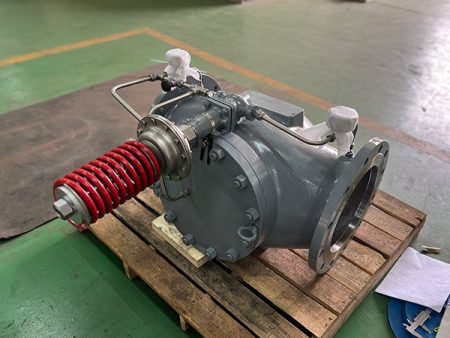
A self-operated pressure control valve uses the fluid’s pressure to change flow by itself. It does not need to be plugged into any outside power. This helps save energy. Many people choose these valves because they are simple and work well. That is why they are used a lot to save energy:
- They do not need extra power like electricity or air.
- The system is simple and has fewer parts than a pneumatic ball valve or electric ball valve.
- You save money because the valve does not need much fixing.
- The pressure control valve uses the process fluid for power, just like a pneumatic control valve.
Key Takeaways
- Self-operated pressure control valves use fluid pressure to work. They do not need electricity or air. This saves energy and makes systems simpler.
- These valves keep pressure steady by using a spring and fluid force. They change on their own when pressure goes up or down.
- You can change the valve’s set pressure easily. Just turn an adjusting screw or knob to match your system.
- There are different types of valves for different jobs. Some lower pressure, some let out extra pressure, and some help control temperature.
- Self-operated valves are reliable and do not cost much. They are good for places far away or where power goes out often. Their design is simple.
- You should do regular maintenance to keep valves safe and working. Check seals, clean parts, and look at the diaphragm often.
- These valves work well in pipelines, vessels, and heating or cooling systems. They are also used in many factories to protect equipment and save energy.
- Know the limits: these valves may not control as well as electric valves. They are not safe for flammable fluids unless you add extra safety.
Overview
What Is It
A self-operated pressure control valve uses the fluid’s energy to control pressure or flow. You do not need to plug it into electricity or use compressed air. This valve works on its own with just the pressure from the fluid. Groups like API, ISO, ASME, and ANSI/FCI make rules for how these valves are made and tested. These rules help keep the valves safe and working well. When you pick a self-operated pressure control valve, you can count on it to keep your system working without extra power or tricky controls.
People might call these valves self-operated control valves or self-operated regulators. These names all mean the same thing. The valve controls pressure or flow by itself. Many industries use these valves because they are easy to use and very reliable.
Key Features
Self-operated control valves have some important features:
- The valve opens or closes using the fluid’s pressure. You do not need any extra power or special tools.
- The valve uses a force balance system. The fluid pushes on a diaphragm or piston. A spring pushes back against it. The way these two forces push decides how much the valve opens.
- For downstream pressure control, the valve checks the pressure after the valve. If this pressure changes, the valve moves to keep it steady.
- For upstream pressure control, the valve checks the pressure before the valve. It moves to keep this pressure at the level you set.
- You can change the set pressure by turning an adjusting nut.
- You should think about where you measure pressure, how you put in the valve, and if you need other parts like filters or bypass valves.
Tip: Self-operated control valves work well in simple systems. They keep pressure steady without needing lots of extra equipment.
You may wonder how these valves are different from electrically actuated valves. Here is a quick comparison:
| Feature/Aspect | Self-Operated Pressure Control Valves | Electrically Actuated Valves |
|---|---|---|
| Power Requirement | No electrical or pneumatic power needed; mechanical operation via springs and diaphragms | Require electrical power for actuators and sensors |
| Turndown Ratio | Typically around 10:1; often need multiple valves in series | Up to 50:1; supports low loads without multiple valves |
| Control Capability | Fixed “set and forget” pressure; no modulation based on load or environmental changes | Precise modulating control via sensors and controllers |
| Maintenance and Reliability | Prone to clogging due to moisture and dirt in sensing pipes | Minimal maintenance; no clogging issues due to electrical signals |
| Remote Monitoring and Visibility | No remote communication or visibility of valve status | Full remote monitoring and alerts via BAS |
| Energy-Saving Capability | Limited; cannot adjust to changing load or conditions | Superior; can optimize system performance and energy savings |
| Integration with Automation | Standalone devices, not integrated with BAS | Fully integrable with BAS for enhanced control and monitoring |
A self-actuated pressure control valve saves energy because it does not need outside power. But it does not change as well when conditions change, unlike an electric valve. You should pick the valve that fits your system best.
Main Components

Valve Body
The valve body is the main part of the valve. It holds all the other pieces together. The valve body must be strong. It needs to handle the fluid’s pressure and heat. Different materials are used to make valve bodies. Each material works best in certain situations. Here is a table that shows what each material does:
| Material | Key Properties and Performance Effects | Typical Applications and Impact on Valve Performance |
|---|---|---|
| Cast Iron | Durable, cost-effective, suitable for low-pressure applications | Economic choice for less demanding conditions |
| Ductile Iron | Improved strength and toughness compared to cast iron | Handles higher pressure, increases durability |
| Stainless Steel | Excellent corrosion resistance, high strength | Best for corrosive and high-pressure systems, lasts longer |
| Bronze | Resistant to seawater corrosion | Used in marine settings, resists saltwater |
| Plastic | Lightweight, corrosion-resistant | Good for chemical resistance, reduces corrosion problems |
| A105 Carbon Steel | High strength, hardness, weldability; works at high temperature and pressure | Used in oil & gas, power plants; resists wear and fatigue |
| WCB Cast Carbon Steel | Balanced strength, toughness, ductility; good mechanical properties | Used in oil & gas, chemical plants; fits moderate to high temp/pressure |
Pick the right material for your system. This helps the valve last longer and stay safe.
Diaphragm or Piston
The diaphragm or piston moves inside the valve. It reacts when the pressure changes. Diaphragms are made from strong, bendy materials like EPDM, Viton, or PTFE. These materials help the diaphragm last a long time. A good diaphragm can work for over 10,000 hours. Some last up to 20,000 hours or millions of cycles. How long it lasts depends on the material, stress, heat, and chemicals. If you use the valve the right way, the diaphragm or piston will work for years.
A piston is another choice. It is made from metal and is good for high-pressure jobs. Both parts help the valve move and control the flow.
Tip: Always check what the diaphragm or piston is made of before you put in a valve. This helps you avoid problems later.
Sensing Element
The sensing element is very important in these valves. It finds pressure changes and tells the moving parts what to do next. Most valves use a diaphragm as the sensing element. The design and material of this part matter a lot. If the sensing element is very good, the valve keeps pressure steady even if the flow changes. If it has friction or wears out, the valve may not work well. This can make the system less stable or less efficient.
A good sensing element helps the valve react fast and keeps things running smoothly. The diaphragm’s rebound force also matters for pressure control. A smaller rebound force means better control. The life of the sensing element is important too. If it lasts longer, the valve will work well for more time.
Spring and Setpoint
The spring is a key part of how self-operated control valves work. You will find that most of these valves use compression springs. The spring pushes against the pressure from the fluid. This balance helps the valve open or close at the right time.
You can change the setpoint by turning an adjusting screw. The setpoint is the pressure where the valve starts to open. When you tighten the screw, you make the spring push harder. This means the valve will open at a higher pressure. If you loosen the screw, the spring force gets weaker, and the valve opens at a lower pressure.
Here are some important facts about springs in these valves:
- Compression springs are the most common type.
- The spring force decides when the valve opens or closes.
- You can adjust the setpoint by changing the spring compression.
- In direct-acting valves, the spring works directly against the system pressure.
- In pilot-operated valves, a smaller spring controls a pilot valve, which then controls the main valve. This setup gives you more stable pressure control, especially when you have high flow or high pressure.
- The spring keeps the system pressure within the limits you set.
The spring’s job is very important. It helps keep the pressure steady. If the spring is too weak or too strong, the valve will not work right. You should always check the spring when you set up or fix a valve.
Note: If you want better setpoint stability, pilot-operated valves are a good choice. They use a smaller spring and can keep the pressure more constant, even when the flow changes a lot.
Other Parts
Besides the main parts, self-operated control valves have other pieces that help them work well. You might see these parts in different valves:
- Adjusting Screw or Knob: This lets you set the pressure you want. You turn it to make the spring tighter or looser.
- Bonnet: This covers and protects the spring and diaphragm or piston.
- Seals and Gaskets: These stop leaks and keep the fluid inside the valve.
- Sensing Line: Some valves use a small pipe to sense pressure from a certain spot in the system. This helps the valve know when to open or close.
- Valve Plug or Disc: This part moves to let fluid through or block it. The plug or disc works with the seat to control flow.
- Seat: The seat is where the plug or disc rests when the valve is closed. A good seat stops leaks.
- Yoke or Stem: This connects the moving parts inside the valve. It helps transfer force from the diaphragm or piston to the plug or disc.
Each part has a job. When all the parts work together, the valve can control pressure without outside power. You should check all these parts during maintenance. If one part fails, the valve may not work right.
Tip: Always follow the manufacturer’s guide when you check or replace parts. This helps your valve last longer and keeps your system safe.
Working Principle
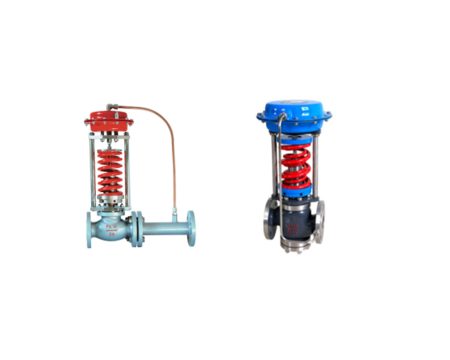
Self-Actuated Pressure Control Valve
A self-actuated pressure control valve works by using the fluid’s own energy. It does not need electricity or air to work. The valve can sense pressure changes and reacts by itself. Here is how it works in simple steps:
- The valve gets pressure from the fluid before or after it. This pressure goes into a chamber above the diaphragm or piston.
- The pressure pushes on the diaphragm or piston and makes a force.
- A spring pushes back against this force. You can turn the spring to set your pressure.
- When the pressure and spring force are equal, the valve stays still.
- If the pressure changes, the balance changes too. The valve opens or closes to bring the pressure back to your setpoint.
- The valve keeps moving as needed to keep the pressure steady.
The self-actuated pressure control valve only uses the fluid’s pressure to work. This saves energy and gives you automatic control without extra tools.
Upstream Control
Upstream pressure control keeps the pressure steady before the valve. You use this to protect equipment or keep a supply line safe. The valve checks the pressure on the inlet side. If the inlet pressure gets too high, the valve opens more. This lets more fluid out and lowers the pressure.
- The diaphragm or piston feels the inlet pressure.
- If the pressure goes above your setpoint, the valve opens wider.
- More fluid flows out, so the pressure drops.
- When the pressure is normal again, the valve closes a bit.
This control helps stop damage from high pressure. You see upstream pressure control in relief valves or pressure regulators that protect pumps and pipes.
Downstream Control
Downstream pressure control keeps the pressure steady after the valve. You use this when you want the pressure going to your equipment to stay the same. The valve checks the pressure on the outlet side. If the outlet pressure gets too high, the valve closes a bit. This lets less fluid out and brings the pressure down.
- The diaphragm or piston feels the outlet pressure.
- If the pressure goes above your setpoint, the valve closes more.
- Less fluid flows out, so the pressure drops.
- When the pressure is right, the valve opens just enough to keep it steady.
You use downstream pressure control in systems that need steady supply pressure, like heating or cooling systems.
Here is a table to show the difference between upstream and downstream pressure control:
| Aspect | Downstream Pressure Control (Pressure Reducing Valve) | Upstream Pressure Control (Pressure Relieving Regulator) |
|---|---|---|
| Control Point | Outlet pressure | Inlet pressure |
| Operation Principle | Keeps outlet pressure near set point, even if inlet pressure or flow changes | Opens more when inlet pressure goes above set point |
| Purpose | To keep outlet pressure steady | To let out extra inlet pressure and keep it near set point |
| Valve Action | Changes opening based on outlet pressure | Opens to let out pressure above set point |
| Power Requirement | None (uses the fluid’s own pressure and temperature) | None (uses the fluid’s own pressure and temperature) |
| Comparison to Safety Relief Valve | Gives steady control, not just for emergencies | Gives steady control, not like pop-open safety relief valves |
Note: The diaphragm or piston is like the heart of the valve. It senses pressure changes and moves the valve plug to keep your system safe and steady.
A self-actuated pressure control valve gives you automatic, steady pressure control. You can use it for both upstream and downstream jobs. The valve’s simple design makes it easy to use and take care of.
Types of Pressure Control Valve
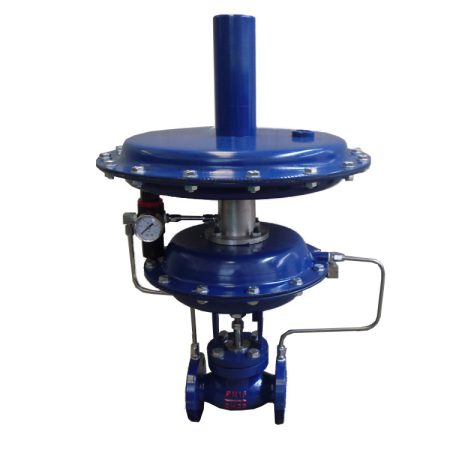
Pressure Regulating Valve
Pressure regulating valves help keep pressure steady in many systems. They lower high pressure to a safe level. People also call them pressure regulators or direct-operated regulators. These valves sense the pressure after the valve. They change how much they open to keep the pressure at your chosen level.
A pressure regulator has a spring and a diaphragm inside. The spring pushes the valve open if the pressure drops. If the pressure goes up, the diaphragm pushes back and closes the valve. This simple setup gives you steady pressure without needing outside power.
You can use pressure regulators in lots of places:
- Home water systems to protect things and stop leaks.
- Steam systems in factories to keep boilers safe.
- HVAC systems in buildings to keep water pressure right.
- Air systems for tools and machines.
- Gas systems to safely deliver natural gas or propane.
Here is a table that shows the main types of self-operated pressure control valves and what they do:
| Valve Type | Description | Function/Benefit | Common Applications |
|---|---|---|---|
| Pressure Reducing Valve | Makes pressure lower after the valve | Stops damage, keeps pressure steady | Water, HVAC, gas, steam |
| Relief Valve | Lets out extra pressure | Protects equipment, keeps things safe | Boilers, pipelines, hydraulic systems |
| Backpressure Regulator | Keeps pressure steady before the valve | Stops damage, keeps flow steady | Chemical, oil & gas, water treatment |
| Direct-Operated Regulator | Changes right away when pressure changes | Fast, simple for medium pressures | General industrial, water, air |
Tip: Pick a direct-operated regulator for easy jobs that need fast action.
Differential Pressure Valve
A differential pressure valve keeps the pressure difference between two spots steady. Some people call it a self-acting differential pressure control valve. It helps balance flow in systems with many branches, like heating or cooling.
This valve uses a diaphragm to feel the pressure on both sides. If the difference changes, the valve moves to fix it. You can turn the spring to set the difference you want.
A differential pressure valve gives you these good things:
- Keeps flow steady even if system pressure changes.
- Stops too much or too little flow in branches.
- Makes sure each part gets the right amount of flow.
- Saves pump energy by keeping pressure just right.
- Makes setup easier because it balances itself.
You will see these valves in heating, water treatment, or factory systems. They help save energy and keep everything working well.
Note: A differential pressure valve can stop hunting and make control better in your system.
Temperature Control Valve
A temperature control valve uses self-operated pressure control to keep temperature steady. You do not need electricity or air for these valves. They have a special part that reacts to heat.
Here is how it works:
- The valve has a sensing bulb with fluid or wax inside.
- When it gets hot, the fluid grows or the wax melts.
- This makes pressure in the bulb, which pushes on a diaphragm or actuator.
- The actuator moves the valve to let more or less fluid through, changing the temperature.
You can pick the right sensing part to set the temperature range. The valve will open or close to keep your system at the right temperature. You will see these valves in steam heaters, air dryers, or hot water systems.
Callout: Temperature control valves give you safe, automatic temperature control without extra wires or power.
Pilot-Operated Valve
A pilot-operated valve gives you better control than a simple valve. It is also faster. People call it a pilot-operated regulator. It uses a small pilot valve to sense pressure changes. The pilot valve tells the main valve what to do next. This setup helps keep pressure very steady and accurate.
A pilot-operated regulator has two main parts. The pilot valve reacts fast when pressure changes. It sends a signal to the main valve. The main valve then opens or closes as needed. This design lets you handle bigger flows and higher pressures. It works better than a direct-acting valve for these jobs. You can use a pilot-operated regulator in big factories or complex piping systems. It is good when you need fine control.
You might want to know how a pilot-operated regulator is different from a direct-acting pressure regulator. Here is a table to show the differences:
| Valve Type | Response Time | Accuracy and Control Precision |
|---|---|---|
| Pilot-Operated Valve | Highly responsive; pilot valve senses changes quickly and adjusts main valve accordingly | Provides precise control and fine modulation of pressure and flow; suitable for larger systems requiring fine-tuning |
| Direct-Acting Self-Operated Valve | Simpler mechanism with spring-loaded plunger; generally slower response compared to pilot-operated valves | Less precise control; suitable for low-flow applications where exact control is not critical; reliable but less accurate |
A pilot-operated regulator can sense pressure changes almost right away. The pilot valve acts fast. This helps the main valve adjust quickly. You get steady pressure, even if your system changes a lot. A direct-acting pressure regulator is good for simple jobs. But it is not as fast or as accurate as a pilot-operated regulator.
Tip: If you need to control pressure in a big system, pick a pilot-operated regulator. It gives you steady flow and quick response.
You will see pilot-operated regulators in many places. They work well in steam systems, gas pipelines, and water treatment plants. These valves help keep equipment safe. They also help your process run smoothly. For tough jobs, a pilot-operated regulator is often the best choice.
Applications
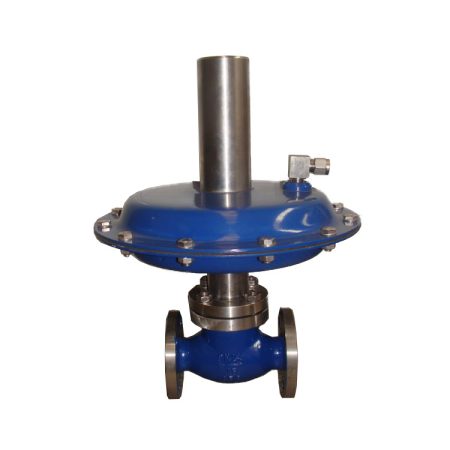
Pipelines
Self-operated pressure control valves are used in pipeline systems. They help keep pressure steady as fluids move through pipes. The valve senses when pressure changes and adjusts itself fast. You do not need outside power or control signals for this. The valve uses the fluid’s own energy to open or close.
If the pressure goes up, the valve lowers the flow. If the pressure drops, the valve opens more to let more fluid pass. This automatic action keeps the system safe and stable. These valves work well even in places without electricity. They are very accurate and can keep pressure close to your setpoint.
You can find these valves in many pipelines, like:
- Gas lines for homes and businesses
- Steam pipes in factories
- Water supply networks
- Instrument air or gas lines
- Fuel gas lines for furnaces
Tip: Self-operated valves protect your equipment from sudden pressure changes. They also help stop leaks or bursts in pipelines.
Vessels
Self-operated pressure control valves help manage pressure inside vessels like tanks or reactors. These valves keep the pressure safe and steady. The valve balances the force from the fluid with a spring inside. If the pressure gets too high, the valve opens to let some fluid out. If the pressure drops, the valve closes to keep more fluid inside.
Here is a table to show how these valves work in vessels:
| Aspect | Explanation |
|---|---|
| Pressure Management | Keeps vessel pressure steady without outside power |
| How It Works | Uses fluid energy and a spring to open or close the valve |
| Types Available | Pressure reducing, back-pressure, and differential pressure regulators |
| Main Benefits | Compact, reliable, low cost, and easy to install |
| Why Use Them | Protects equipment, keeps processes safe, and maintains system efficiency |
You can pick the right valve for your vessel’s needs. Think about the pressure range, flow rate, and type of fluid. These valves help stop damage and keep your process running well.
Heating and Cooling
In heating and cooling systems, self-operated pressure control valves save energy and keep temperatures steady. These valves change the flow of hot or cold water, steam, or other fluids based on the pressure or temperature you set. You do not need extra power or tricky controls.
These valves help you:
- Keep the right mix of fluids for better heat transfer and pumping
- Lower energy bills by making chillers and boilers work better
- Make sure every part of your system gets enough flow, even if pressure changes
- Avoid problems like low Delta T syndrome, which wastes energy
- Make setup and maintenance easier, saving time and money
Note: Self-operated valves in HVAC systems help keep buildings comfortable and efficient without extra work.
You will see these valves in places like offices, schools, hospitals, and factories. They help keep heating and cooling systems balanced and reliable. This makes sure everyone stays comfortable and helps you save money.
Industrial Processes
You can find self-operated pressure control valves in many factories. These valves help keep systems safe and running well. They do not need electricity or compressed air to work. The valve uses the pressure from the fluid to move by itself.
Factories use these valves when steady pressure is needed. You might see them in chemical plants, oil refineries, food factories, or medicine making. All these places need good pressure control to keep things safe and working right.
Here are some ways you might use self-operated pressure control valves in factories:
- Reactors: These valves keep reactor pressure steady. This helps stop dangerous pressure jumps.
- Heat Exchangers: The valve controls steam or cooling water flow. This keeps the process at the right temperature.
- Mixing Tanks: The valve keeps pressure steady when adding gases or liquids. This helps get the right mix every time.
- Compressed Air Systems: The valve keeps air pressure steady for tools and machines. This helps stop damage and keeps things working.
Using self-operated pressure control valves gives you many good things:
- Energy Efficiency: No outside power is needed. The valve saves energy, which is great for faraway places.
- Reliability: The simple design has few moving parts. You do not have to worry about power going out.
- Cost-Effectiveness: You save money because you do not need extra controllers. This makes the valve cheaper to buy and use.
- Minimal Maintenance: The valve’s design means less fixing is needed. You spend less time and money on repairs.
- Safety and Operational Efficiency: The valve keeps pressure steady. This protects your equipment and helps things run smoothly.
Tip: If you want a valve that works during a power outage, pick a self-operated pressure control valve.
Here is a table that shows where you might use these valves in factories:
| Industry | Typical Application | Why Use a Self-Operated Valve? |
|---|---|---|
| Chemical Plants | Reactor pressure control | Safety, steady process, low maintenance |
| Oil Refineries | Steam and gas regulation | Energy savings, reliability |
| Food Processing | Mixing and heating systems | Consistent quality, easy operation |
| Pharmaceuticals | Clean steam supply | Precise control, safety |
You can see that self-operated pressure control valves help keep factories safe, efficient, and save money. These valves help your plant run better every day.
Pros and Cons
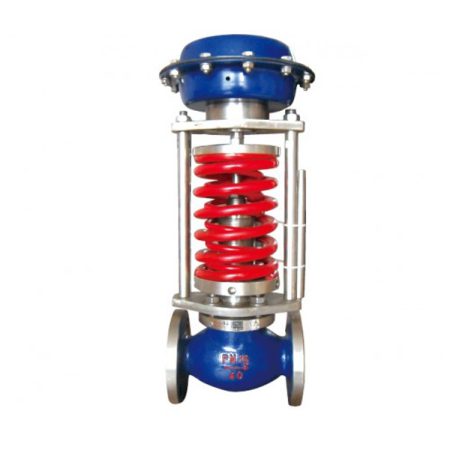
Advantages
When you pick a self-operated pressure control valve, you get many good things. These valves use the energy from the process fluid to work. You do not need electricity or compressed air. This makes them easy to use and very dependable.
- No External Power Needed: The valve moves with the fluid’s own pressure. You do not have to hook it up to outside power.
- Simple Design: The valve has fewer moving parts than other valves. This means there is less that can break.
- Low Maintenance: Because the design is simple, you spend less time and money fixing it.
- Great for Remote Locations: You can use these valves where there is no electricity or air. They work well in hard-to-reach or dangerous places.
- Quick Response: The valve reacts fast when the pressure changes. You get steady control without waiting for a signal.
- Lower Cost: You save money when you buy and set up the valve. You do not need extra things like air compressors.
- Easy Installation: You just connect the valve to your pipes. There is no need for special wires or control systems.
- Reliable in Utility Applications: These valves work well in safety systems and places where you want simple, steady control.
Tip: If you want a valve that still works during a power outage, a self-operated pressure control valve is a smart pick.
Here is a table to show the main advantages:
| Advantage | What It Means for You |
|---|---|
| No external power | Saves energy and works anywhere |
| Simple design | Fewer breakdowns and easier repairs |
| Fast response | Keeps your system stable |
| Low cost | Saves money on purchase and upkeep |
Disadvantages
You should also know about the limits of self-operated pressure control valves. These valves are not right for every job. Some jobs need more advanced control.
- Permanent Deviation: The valve acts like a P-controller. This means it may not keep the pressure exactly at your setpoint. You might see a small, steady error.
- Hammering in Liquid Systems: If the flow pushes the valve closed, you may hear or feel hammering. This can hurt your pipes or equipment.
- Not for Combustible Fluids: You should not use these valves with flammable gases or liquids unless you add extra safety parts.
- Temperature Limits: The diaphragm inside the valve can only handle certain temperatures. If your system gets too hot or too cold, the valve may stop working.
- Seat Leakage in Some Types: Double-ported valves can leak more than other types. You might lose up to 0.5% of your flow through the seat.
- Less Precision: These valves do not give you the fine control that electric or pneumatic valves can provide. You cannot connect them to building automation systems.
Note: Always check what your system needs before picking a self-operated valve. If you need very tight control or work with dangerous fluids, you may need a different type.
Here is a table to compare the main disadvantages:
| Disadvantage | What to Watch Out For |
|---|---|
| Permanent deviation | Small error from setpoint |
| Hammering | Possible noise and damage in liquid systems |
| Not for combustibles | Needs extra safety for flammable fluids |
| Temperature limits | Diaphragm may fail in extreme conditions |
| Seat leakage | Some types leak more than others |
By knowing both the good and bad sides, you can make the best choice for your system.
Troubleshooting
Pressure Issues
You may notice pressure problems with your self-operated pressure control valve. These issues can show up as unstable pressure, slow response, or strange noises. Knowing what causes these problems helps you fix them quickly.
Common pressure issues include:
- Sticking or binding of the valve
- Cavitation inside the valve
- Valve noise and vibration
- Slow response time
- Valve leaks
Many of these problems start with friction. If the valve does not have enough lubrication, it can stick. Corrosion can also make parts bind together. Sometimes, dirt or foreign objects get inside and block the valve’s movement. You might hear loud noises or feel vibrations if the flow inside the valve becomes turbulent. Cavitation happens when the pressure drops too low, causing vapor bubbles to form and collapse. This can damage the valve and make it noisy.
Improper valve sizing often leads to cavitation and slow response. If the valve is too small or too large for your system, it cannot control pressure well. Mechanical failures, like a broken diaphragm or spring, can also cause the valve to stop working. If the diaphragm or control line breaks, the valve usually opens. If the spring breaks, the valve usually closes.
Tip: Regular maintenance and correct valve sizing help prevent most pressure issues. Always check for signs of corrosion, dirt, or broken parts.
Leakage or Sticking
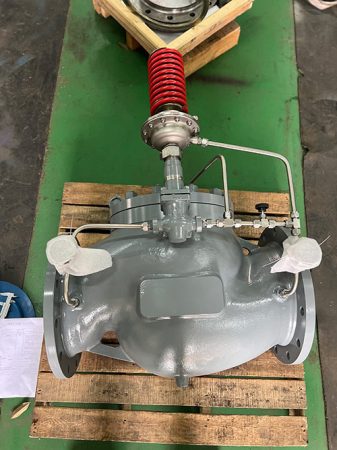
Leaks and sticking are common problems you might face. Leaks often happen when seals or gaskets wear out. You may also see leaks if the valve seat gets damaged. Sticking usually comes from dirt, rust, or lack of lubrication.
To spot leaks, look for fluid around the valve body or at the connections. If you see drips or wet spots, the valve may need new seals. For sticking, you might notice the valve does not move smoothly or gets stuck in one position. This can cause pressure to swing up and down.
Here are some steps you can take:
- Inspect seals and gaskets for wear or cracks.
- Clean the valve internals to remove dirt or debris.
- Lubricate moving parts as recommended by the manufacturer.
- Replace damaged seats or plugs.
- Check for corrosion and remove any rust.
Note: Fixing leaks and sticking early keeps your system safe and helps the valve last longer.
Setpoint Problems
Setpoint problems can make your valve control the wrong pressure. You might set the pressure, but the valve does not hold it steady. This can happen if the spring is worn out or not adjusted right. Sometimes, the adjusting screw slips or gets stuck.
You may also see setpoint drift if the diaphragm weakens over time. If the valve responds slowly or not at all, check the spring and diaphragm first. Make sure the adjusting screw turns smoothly and holds its position.
A quick checklist for setpoint issues:
| Problem | What to Check | Possible Fix |
|---|---|---|
| Pressure not steady | Spring tension, diaphragm | Adjust or replace parts |
| Setpoint drifts | Adjusting screw, spring | Tighten or replace screw |
| Valve slow to respond | Diaphragm, friction | Clean or replace diaphragm |
Callout: Always follow the manufacturer’s instructions when adjusting the setpoint. This helps you avoid damage and keeps your system running smoothly.
Maintenance
Taking care of your self-operated pressure control valve helps you avoid problems and keeps your system running smoothly. Good maintenance starts with following the manufacturer’s instructions. You should always install the valve the right way. Make sure you align it correctly, seal it well, and support it so that no extra stress sits on the valve body.
You need to set up a regular maintenance schedule. This helps you catch small issues before they turn into big problems. Here are some key steps you should follow:
- Check the valve and piping every month. Look for leaks, rust, or dirt. Clean parts like Y-strainers and orifices to keep the flow steady.
- Inspect the diaphragm every three months. If you see cracks or wear, replace it. Also, check the seat packing and main valve diaphragm for signs of damage.
- Once a year, do a full inspection. Take the valve apart and look at every part. Replace anything that looks worn or broken. This keeps your valve working like new.
- Always follow safety rules. Before you start any work, isolate the valve and depressurize the system. Use lockout tagout (LOTO) procedures to make sure no one gets hurt.
- When you adjust the pressure, turn the screw slowly. Turn it clockwise to raise the pressure. Turn it counter-clockwise to lower the pressure. Move in small steps to avoid sudden changes that could hurt the valve or your system.
Tip: Never skip safety steps. Isolating and depressurizing the valve protects you and your coworkers from accidents.
You should also keep the valve clean and lubricated. Dirt and rust can make the valve stick or leak. Use the right lubricant for your valve type. If you see leaks, check the seals and gaskets. Replace them if needed.
Here is a simple maintenance checklist for your valve:
| Task | How Often | What to Look For |
|---|---|---|
| Visual inspection | Monthly | Leaks, rust, dirt, loose parts |
| Clean strainers/orifices | Monthly | Blockages, buildup |
| Diaphragm and seat check | Quarterly | Cracks, wear, damage |
| Full valve inspection | Annually | All parts, replace as needed |
| Lubrication | As recommended | Smooth movement, no sticking |
FAQ
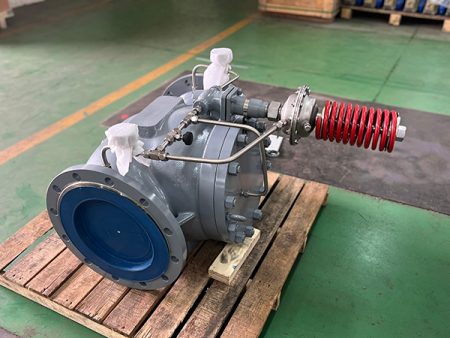
What is the main benefit of a self-operated pressure control valve?
You do not need electricity or air to use this valve. It works by itself using the fluid’s pressure. This saves energy and makes the valve simple to use.
Can you adjust the set pressure on these valves?
Yes, you can adjust the set pressure. You turn the adjusting screw or knob to change the spring force. This lets you pick the pressure you want.
Where should you install a self-operated pressure control valve?
You should install the valve in a spot where you need steady pressure. Common places include pipelines, tanks, heating systems, and factory equipment.
How often should you maintain the valve?
Check the valve every month for leaks or dirt. Clean strainers and inspect the diaphragm every three months. Do a full inspection once a year.
Tip: Regular checks help your valve last longer and work better.
What causes a valve to leak or stick?
Leaks often come from worn seals or damaged seats. Sticking happens when dirt, rust, or lack of lubrication blocks moving parts. Clean and replace parts as needed.
Can you use these valves with any fluid?
You can use these valves with many fluids, like water, steam, or air. Do not use them with flammable fluids unless you add extra safety parts.
What should you do if the valve does not hold the set pressure?
Check the spring and diaphragm first. Make sure the adjusting screw is tight. Clean the valve and replace any worn parts. If problems continue, ask a valve expert for help.
Note: Always follow the manufacturer’s guide for best results.
